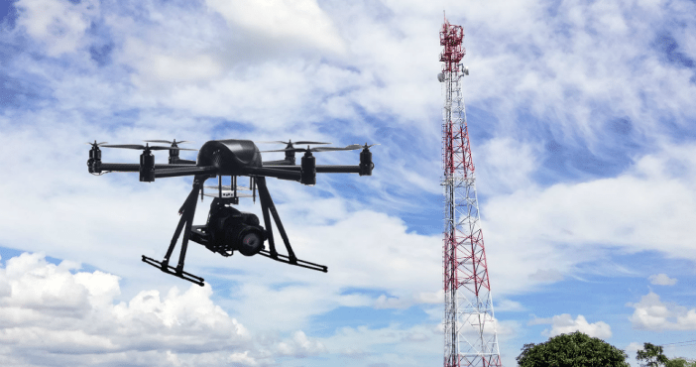Drone operators from other industries look to cell towers for new business
The cell tower industry is just one of many that could be transformed by unmanned aerial systems, more commonly known as drones. Many of us think first of Amazon.com when we think of drones, but drones can carry something much more valuable than the typical Amazon package. Drones can deliver data for many industries, including construction, transportation and energy.
All of these industries are important to Bryan Philips, director of business development for Surveying and Mapping (SAM), a 600-person engineering firm that provides geospatial data solutions and aerial mapping. Drones have been a natural extension of SAM’s business, but as Philips develops his company’s drone business he is looking beyond SAM’s traditional markets.
“SAM is excited about the potential for serving the wireless infrastructure industry with unmanned aerial systems,” said Philips. “The application is a good fit within the FAA’s current line-of-sight constraints and we believe there’s market demand for a service provider with expertise in processing imagery to deliver accurate survey data.” SAM has engaged with infrastructure service providers, and is talking to one of the nationwide carriers as well.
SAM uses software to create custom data sets for clients, an expertise that highlights one of the key opportunities that drones offer the wireless industry. Drone operators who are already serving the industry are recognizing the value of drone-delivered data.
“There’s nothing more valuable to me than being able to … not only see the asset tags, document all the appendages of the tower, and bring a 3-D CAD modeling of that where I can actually then identify any tilts or leans or twists or anything that might be a failure to a tower,” said Phil Larsen, president of telecommunications services at Hazon Solutions. Larsen said that Hazon makes a video of a safety climb at every tower its drones document, and makes that video available on a public site so that anyone who needs to climb that tower can see it.
Drones can also carry tiny signal analyzers to measure the radiation patterns of the tower antennas, and can be used for radio planning and line-of-sight testing between towers. Recognizing the value of drones to the cell tower industry, the National Association of Tower Erectors (NATE) has established an unmanned aerial systems committee to monitor trends and regulatory concerns and to make recommendations about best practices for drone use in the tower industry. The committee works closely with the Federal Aviation Administration, which is still in the process of drafting rules for commercial drone use.
“There’s not a week that goes by that I don’t get a call from someone about drones,” said NATE executive director Todd Schlekeway. Schlekeway knows that some tower climbers may be worried that drones will replace them, but he says that’s not the case. “Unmanned aerial systems are not going to be a replacement for the workforce,” he said. “At some point it’s going to be another tool in the toolbox that these contractor companies will have in their truck when they roll up to a tower site. It could prevent the tower tech from having to go up and down the tower one or two times extra per day, so there’s a safety value in that.”
“It will actually enhance the tower climber’s role,” said Larsen, a former climber who directed operations at Nexius before joining Hazon. “It’s going to increase productivity and it’s going to allow them to stay on site building … versus going back and doing other things that they don’t need to be doing.”
Increasing productivity means lower costs. According to ETAK Systems, another operator of drones for the wireless industry, drones can deliver tower photos and engineering and audit packages for two-thirds of the cost of climbing a tower. The company uses one pilot and one visual observer for each drone flight.
ETAK CEO Lee Priest said the company is currently working for two wireless carriers, and is seeing particularly strong demand for images that show a clear view of the radio center at the top of the tower. The company customizes the optics on its drones to insure that antenna serial numbers and other important information is legible. Priest said the drones are able to get much more detailed images than climbers can get.
Hazon’s Phil Larsen agreed that of all the data drones can deliver, the tower images are the most valuable because they can make the inevitable tower climbs safer. “I’m getting so much information and so much clarity,” said Larsen. “We’ve never had that in our industry.”
Follow me on Twitter.

